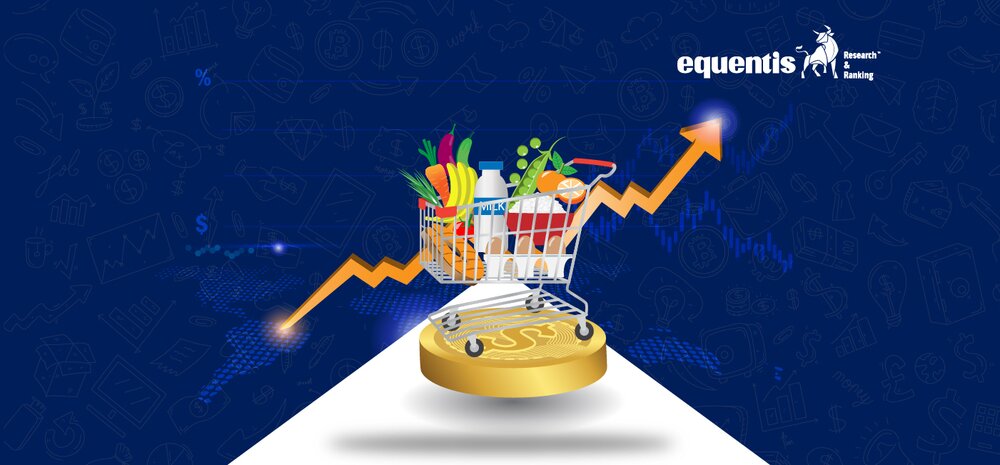Introduction
Inflation is a common term in economics, but did you know that your personal inflation rate can differ significantly from the official inflation rate? While governments report national inflation rates based on a fixed basket of goods, your spending habits, lifestyle, and financial goals influence your individual experience with rising costs. Understanding your personal inflation rate helps you make better budgeting and investment decisions.
Your personal inflation rate can reveal surprising insights. For example, while national inflation may show a modest 5% increase, your expenses in specific categories like healthcare, groceries, or education may rise faster. This is why calculating your personal inflation rate is crucial.
In this guide, we will explain how to calculate your personal inflation rate and provide practical strategies to manage its impact effectively.
What is Personal Inflation Rate?
Your personal inflation rate is the rate at which your individual expenses are increasing over time. Unlike the Consumer Price Index (CPI), which measures average price changes across the country, your personal inflation rate is unique to your lifestyle, spending habits, and financial goals.
For example:
- A person who frequently dines out and travels may experience higher inflation than someone who cooks at home and follows a simpler lifestyle.
- Those with children may face rising education costs, while retirees may spend more on healthcare.
- If you rely heavily on imported products or luxury goods, inflation may impact you more directly than others.
Tracking your personal inflation rate allows you to take control of rising expenses and make better financial decisions.
Why Does Personal Inflation Differ from National Inflation?
The official inflation rate is calculated based on a standardised basket of goods and services that may not align with your personal expenses. As a result, your personal inflation rate may be higher or lower depending on your spending patterns.
For example:
- Frequent Travelers: If you frequently travel, rising flight fares, hotel charges, and dining costs may inflate your personal inflation rate faster than the average.
- Parents with School-Going Children: Education costs, tuition fees, and extracurricular expenses may create higher inflation pressure for families with children.
- Retirees: Those with significant healthcare costs may experience higher personal inflation rates as medical expenses tend to rise faster than other categories.
Key Components That Shape Personal Inflation Rate
Your personal inflation rate is influenced by several variables:
- Spending Categories: Expenses on essentials (groceries, rent, utilities) and discretionary spending (luxury goods, entertainment) may rise at different rates.
- Lifestyle Choices: Those who prioritise premium brands, frequent dining out, or fitness memberships may face greater price hikes.
- Geographical Factors: Living in metropolitan areas with rising real estate prices and transportation costs can elevate your personal inflation rate.
- Income Level: Higher earners may experience faster inflation as they tend to spend more on lifestyle upgrades and luxury items.
By calculating your personal inflation rate, you gain a clearer understanding of how rising costs are impacting your financial stability. Tracking this figure allows you to plan better, adjust your spending habits, and identify cost-saving opportunities.
Your personal inflation rate is a measure of how your individual expenses increase over time, often at a pace different from the national inflation rate. Unlike the Consumer Price Index (CPI), which reflects the average price increase across a range of common goods and services, your personal inflation rate is influenced by your unique lifestyle, consumption patterns, and financial commitments.
How to Manage Your Personal Inflation Rate
To keep your expenses under control, consider these strategies:
- Create a Detailed Budget: Identify areas where costs are rising and make adjustments accordingly. Prioritise essential expenses and cut back on non-essentials.
- Invest Wisely: Consider inflation-protected investments like Real Estate Investment Trusts (REITs), gold, or equity funds that historically outperform inflation.
- Diversify Income Streams: Earning from multiple sources can help offset rising expenses.
- Switch to Cost-Effective Alternatives: Explore budget-friendly substitutes for expensive services or brands. For example, using public transport instead of cabs or switching to generic medicine brands.
- Negotiate and Compare Prices: Regularly review subscriptions, insurance policies, and other recurring expenses to seek better deals.
- Plan for Long-Term Expenses: For predictable rising costs like education or healthcare, start saving early to stay ahead of inflation.
How to Calculate Your Personal Inflation Rate
Follow these steps to calculate your personal inflation rate:
Step 1: Track Your Expenses
Record your monthly spending across key categories such as:
- Groceries
- Rent/Mortgage
- Utilities
- Transportation
- Healthcare
- Education
- Entertainment
- Subscriptions and Memberships
Maintaining records for at least a year provides a clearer picture of your financial patterns. Use budgeting apps or spreadsheets to make tracking easier.
Step 2: Calculate Total Expenses for Two Periods
For example:
Total expenses in January 2024: ₹60,000
Total expenses in January 2025: ₹65,000
Step 3: Use the Inflation Formula
Personal Inflation Rate (%) = [(New Expenses – Old Expenses) / Old Expenses] x 100
Example Calculation:
[(₹65,000 – ₹60,000) / ₹60,000] x 100 = 8.3%
This means your personal inflation rate is 8.3%, which could be higher or lower than the official inflation rate reported by the government.
Step 4: Identify Key Expense Drivers
Review your spending records to identify categories that are growing faster than others. Consider factors like:
- Rising fuel prices may push your transportation costs higher.
- A new gym membership or streaming service may add to entertainment costs.
By identifying these drivers, you can take steps to manage those expenses better.
In conclusion, calculating and understanding your personal inflation rate is crucial for maintaining financial stability. By tracking your expenses, identifying cost drivers, and implementing proactive strategies, you can manage inflation’s impact on your savings and investments. Taking control of your spending patterns ensures you stay ahead of rising costs and continue working toward your financial goals.
Inflation is inevitable, but understanding its impact at a personal level empowers you to make better financial choices and safeguard your long-term financial security.
Disclaimer Note: The securities quoted, if any, are for illustration only and are not recommendatory. This article is for education purposes only and shall not be considered as a recommendation or investment advice by Equentis – Research & Ranking. We will not be liable for any losses that may occur. Investments in the securities market are subject to market risks. Read all the related documents carefully before investing. Registration granted by SEBI, membership of BASL & the certification from NISM in no way guarantee the performance of the intermediary or provide any assurance of returns to investors.
FAQ
Why is my personal inflation rate higher than the official rate?
Your personal inflation rate may be higher if you frequently spend on discretionary items, luxury goods, or services that have seen sharper price hikes.
How often should I calculate my personal inflation rate?
It’s advisable to calculate it annually or bi-annually to track changes in your spending patterns.
Can investing in fixed deposits protect me from inflation?
While fixed deposits provide stable returns, they may not always outpace inflation. Consider diversifying into inflation-protected investments for better financial growth.
How does inflation affect long-term financial planning?
Inflation reduces your purchasing power, which means your future expenses may be significantly higher. Planning for inflation is essential to achieve long-term financial goals.
How useful was this post?
Click on a star to rate it!
Average rating 5 / 5. Vote count: 1
No votes so far! Be the first to rate this post.
waitfor delay '0:0:5'--
I’m Archana R. Chettiar, an experienced content creator with
an affinity for writing on personal finance and other financial content. I
love to write on equity investing, retirement, managing money, and more.
 Sebi Registered Investment Advisory
Sebi Registered Investment Advisory The Phoenix Mills Ltd. (PDF)
The Phoenix Mills Ltd. (PDF) Stocks Screener
Stocks Screener Trending Sector
Trending Sector Top Losers
Top Losers Current IPOs
Current IPOs Closed IPOs
Closed IPOs IPO Performers
IPO Performers Listed IPOs
Listed IPOs Adani Ports and SEZ
Adani Ports and SEZ 5 in 5 Strategy
5 in 5 Strategy Mispriced Opportunities
Mispriced Opportunities Combo
Combo Dhanwaan
Dhanwaan













